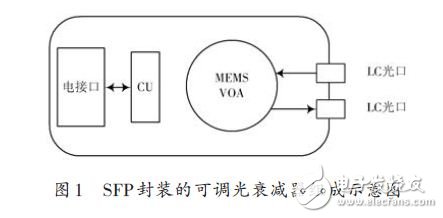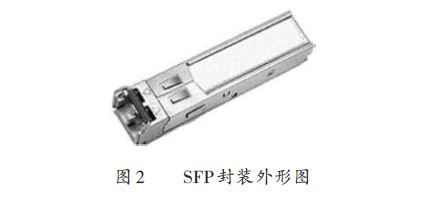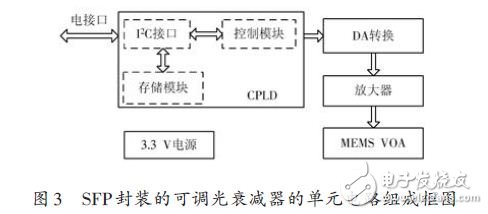Dimmable Attenuator (VOA) is an important fiber dynamics device in fiber-optic communication systems. It is mainly used for channel power balance in Dense Wavelength Division Multiplexing (DWDM) systems to achieve gain flatness, dynamic gain balance and transmission power. balanced. The digital tunable optical attenuator has been greatly developed due to its simple control, small size and good optical performance.
At present, the tunable optical attenuator has been widely used in communication equipment in the field of optical communication. The common practice is to integrate a digital tunable optical attenuator in the device, and the attenuation of the tunable optical attenuator according to the needs of the system by the software of the device. The amount is adjusted. Since the VOA is integrated into the device, the optical path must be integrated in the device and fixed, which makes the optical path system unable to be flexibly configured. In the DWDM system, different sites and different transmission capacities need to be based on actual conditions. The network conditions are flexibly configured, and VOA is an important configurable device in the system. It cannot be flexibly trade-offs with the configuration of the system, which makes the flexibility of the system equipment worse and increases the system cost.
In the field of optical communication, SFP transceiver modules, as standard pluggable devices, have been widely used in system equipment due to their small size, uniform mechanical and optoelectronic interface standards, and flexible and configurable features. In order to make the VOA module flexible and configurable to the system equipment like the SFP transceiver module, this paper proposes to integrate the VOA module into the SFP package, using the mechanical and optoelectronic interfaces of the SFP standard, so that the VOA module can also be like The SFP transceiver module is plug-and-play, making it easy to choose the optical attenuation function.
Due to the SFP package, the volume is greatly limited, and the VOA of Micro-Electro-Mechanical Systems (MEMS) technology is characterized by its small size, simple control, and Better optical properties. Therefore, this paper uses MEMS VOA module to realize the digital adjustable attenuator of SFP package.
1 Digital MEMS VOA principle
Common MEMS VOAs include mirror rotation and displacement occlusion. No matter which type is used to achieve the attenuation of optical power, the amount of light attenuation is in a one-to-one correspondence with the rotation or movement of the mechanical piece in the MEMS chip, and the rotation or movement of the mechanical piece in the chip is added to the upper and lower electrode plates. The voltages on the one-to-one correspondence are related. Therefore, the attenuation amount has a one-to-one correspondence with the voltage, but the attenuation amount is not linear with the driving voltage. In order to realize the digital attenuation control, it is necessary to increase the control circuit, pre-store the attenuation voltage curve data in the circuit, automatically find the corresponding attenuated voltage through the attenuation amount sent by the customer, and then send it to the VOA driving circuit, and then output the corresponding circuit. The voltage is given to the VOA to achieve the corresponding attenuation, thus achieving the purpose of digital control.
2 Implementation of tunable optical attenuator based on SFP package
The tunable optical attenuator based on the SFP package is composed of a structural part, an optical module MEMS VOA, an LC optical port, an electrical control unit CU, an electrical interface, etc., and its structure and composition diagram are shown in FIG.

In terms of structure, a standard SFP package is used, and the outline structure is shown in FIG. 2.

In the electrical control unit part CU is mainly composed of SFP electrical interface, programmable logic device CPLD, D/A conversion, amplifier and MEMS VOA, as shown in FIG.

The SFP electrical interface mainly includes an I2C interface and a power interface. The I2C interface realizes the communication between the host computer and the tunable optical attenuator, including reading the relevant information of the storage unit, reading the stored voltage attenuation data, and issuing the attenuation command; the CPLD function module mainly implements the I2C interface driver, data storage and related. Control function, I2C interface driver realizes communication connection with the host computer, the control unit receives the command of the host computer, decodes the relevant protocol data and performs corresponding operations. If it is the attenuation control command, the attenuation data is acquired and retrieved from the storage module. Attenuation voltage data, after calculation by the algorithm, outputs accurate voltage data to the D/A converter. The digital signal of the D/A converter converts the voltage into an analog signal, which is amplified by the amplifier to drive the MEMS VOA to achieve corresponding attenuation.
In the SFP standard, the electrical interface is specified in detail, including the number of pins of the electrical interface, the definition of the pin, the mechanical size, etc. In the SFP VOA, the function pins of the transceiver module are not required to be used, and only the I2C communication is reserved. Related pins (PIN4/PIN5), power pins (PIN15/PIN16/PIN20), and status pins (PIN6). In terms of optical path, it is mainly composed of LC optical port and MEME VOA. In order to reduce the volume and reduce the coupling loss, VOA is directly coupled with the LC optical port.
3 Application of tunable optical attenuator based on SFP package
The performance of the tunable optical attenuator based on the SFP package is similar to that of the MEMS digital tunable optical attenuator. It has optical properties such as fast response, good linearity, high stability, high attenuation, and due to the SFP package. The digital adjustable attenuator is a stand-alone optical module that supports hot plugging and plug-and-play. It does not need to be integrated into the device. As long as the SFP interface is reserved, the device can be flexibly configured according to system requirements. The adjustable attenuator makes the optical path system flexible and simple, and at the same time, due to its flexible configuration, the cost increase due to system layout changes is saved, thereby reducing the overall cost of the optical network device.
4 Conclusion
The tunable optical attenuator based on SFP package meets the trend of optical devices that tend to be pluggable optical devices. It has the portable and flexible features of SFP modules, and has the similar optical performance of traditional dimmable optical attenuators, which is very suitable for applications. For complex WDM system equipment, it is flexible to form various network applications, so it has broad application prospects.
Led Traffic Lights,Solar Flash Lamp,Traffic Blinker Lights,Led Traffic Control Signs
Jiangsu Bosiwei Optoelectronics Group Co.,ltd , https://www.bswledled.com